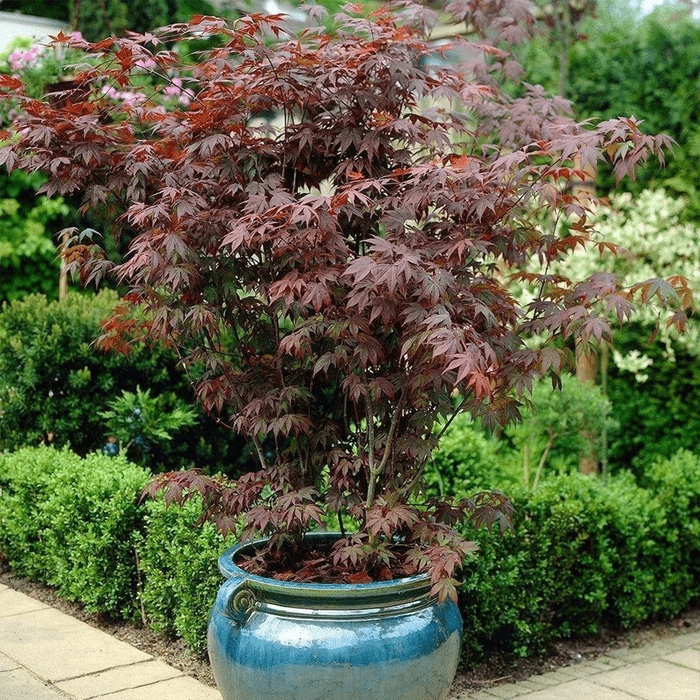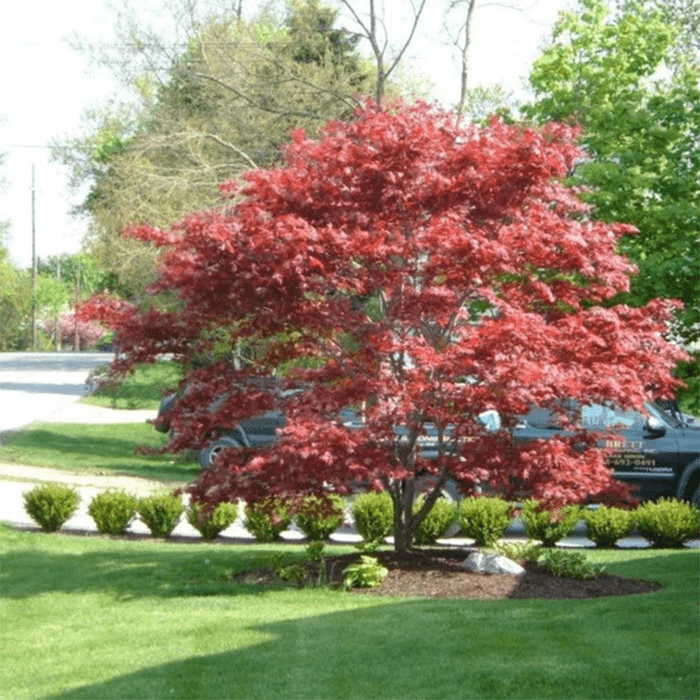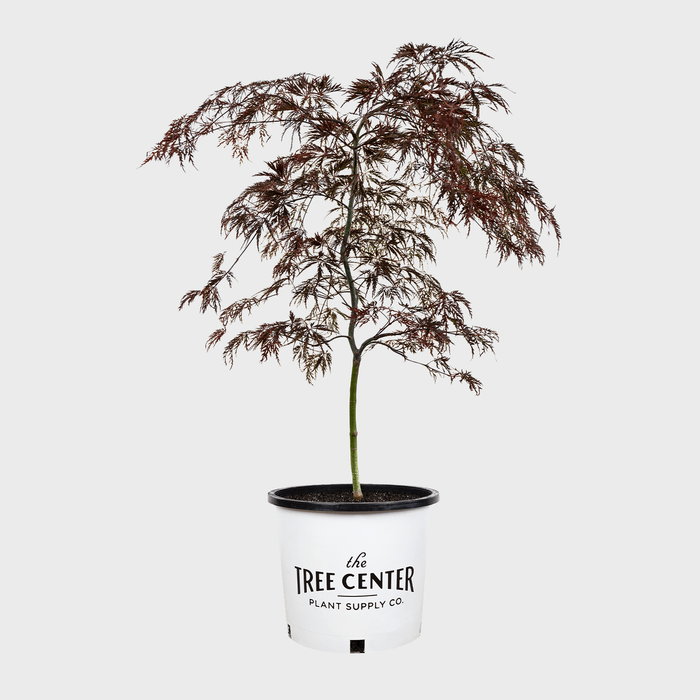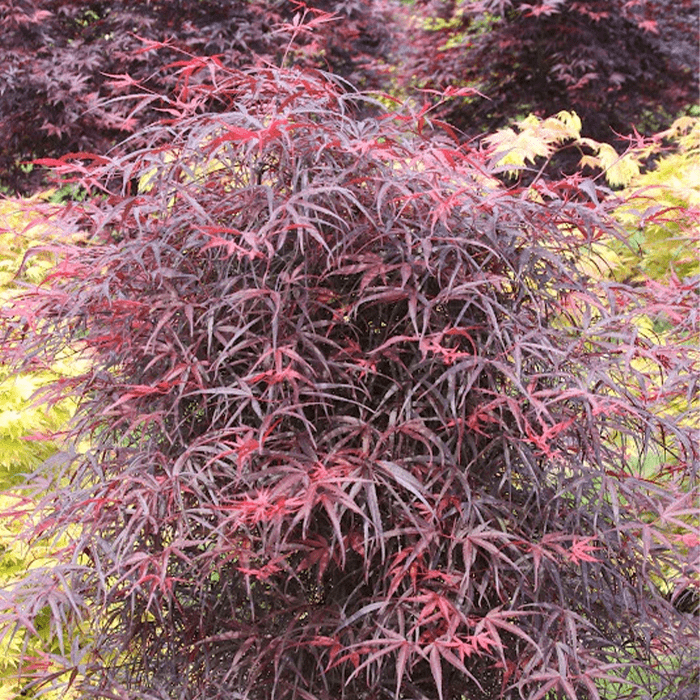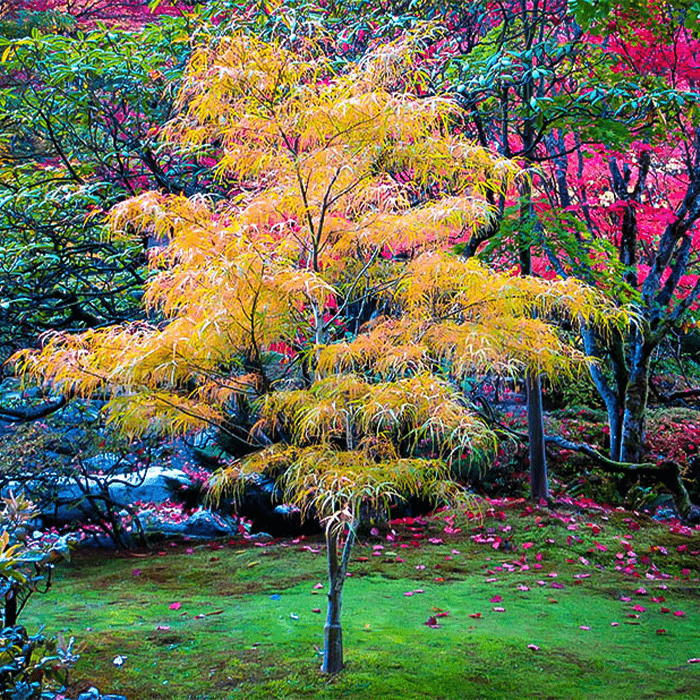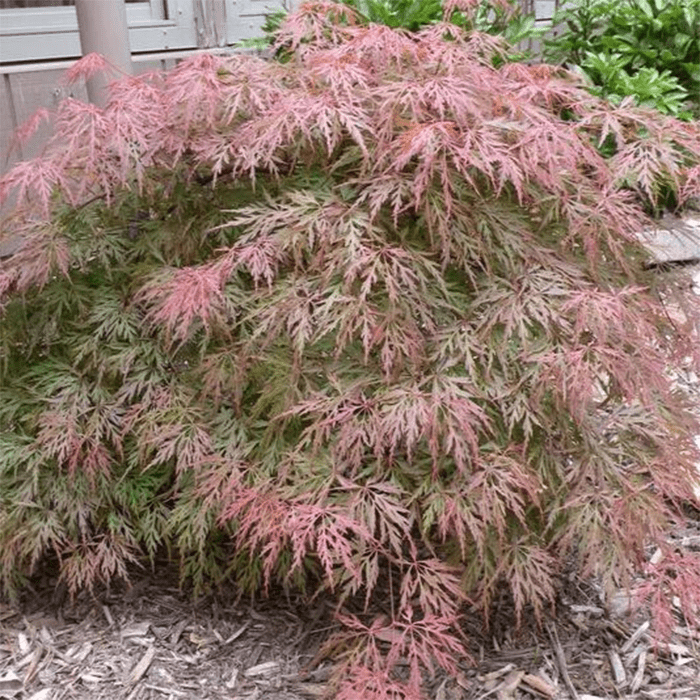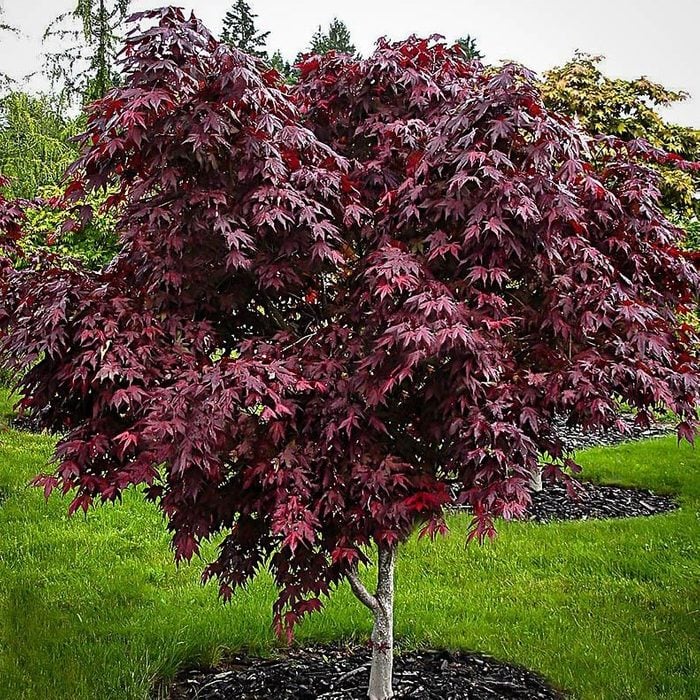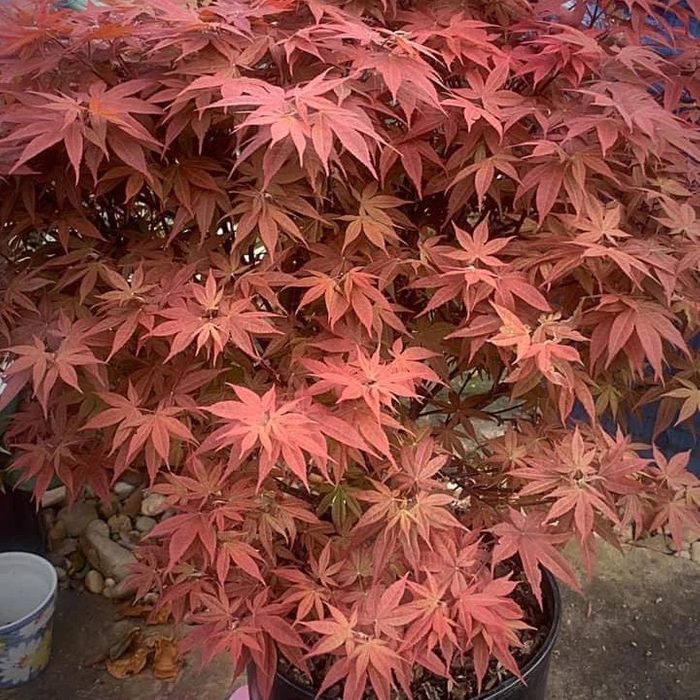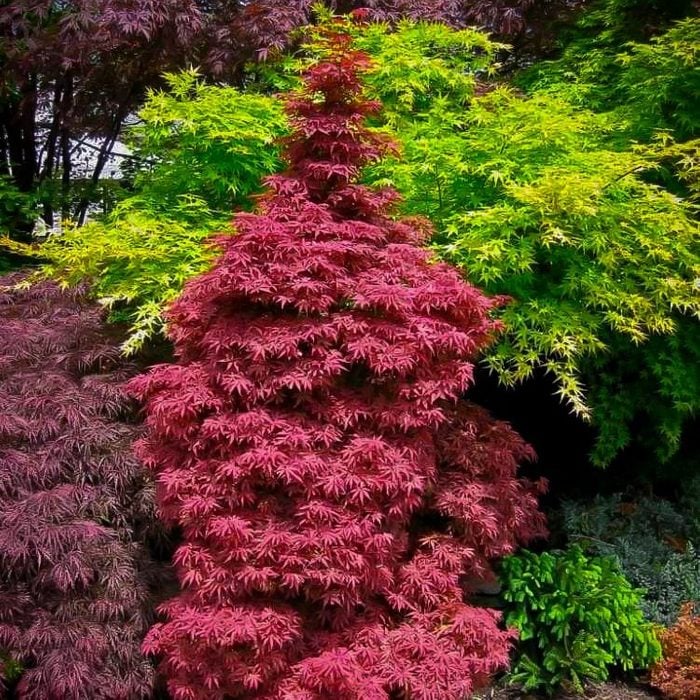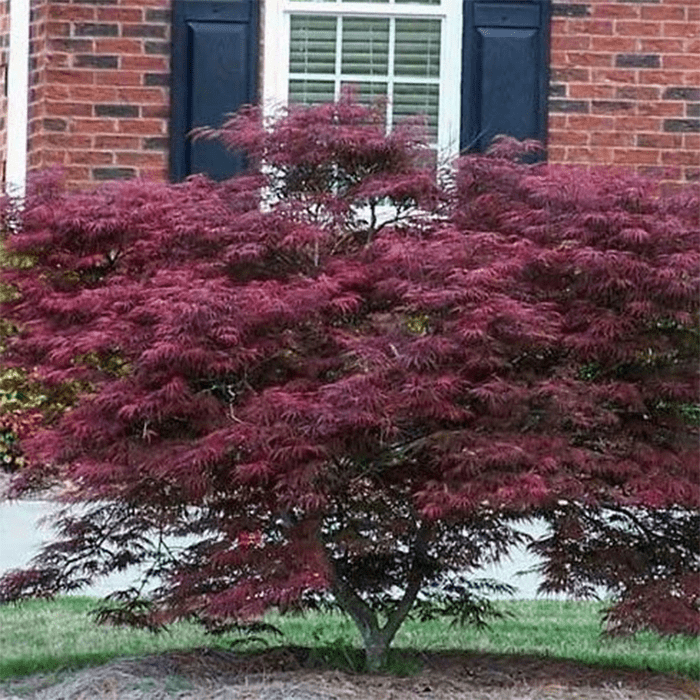Bloodgood
“The Bloodgood Japanese maple is my absolute favorite variety,” says Knapp. “It reaches 15 to 20 feet tall and wide, and has a crimson red broad leaf. It’s the perfect ornamental accent tree alongside a house.”
Crimson Queen
Crimson Queen grows to eight to 10 feet tall and 12 feet wide. “It has a soft, thin leaf that almost cascades over itself, creating beautiful textures mimicking a waterfall,” Knapp says.
Englishtown
Englishtown grows to three to five feet tall and wide. Great for small spaces and gardens.
Hubbs Red Willow
“The Hubbs Red Willow leaf has very long and narrow lobes,” says Knapp, “and the tree height gets to about eight feet.”
Koto No Ito
“Koto No Ito leaves change from green in the spring to orange and yellow in the fall before they drop,” says Knapp. “This could be a nice option if you are looking for a little variation from season to season.”
Orangeola
Orangeola Japanese maple leaves change from green to purple and then a brilliant shade of orange-red in the fall. A graceful, arching tree, it grows slightly taller than wide.
Purple Ghost
This is a densely-branched, upright tree with a spreading canopy of purple-red spring leaves with black veins. Purple Ghost leaves turn green with purple undertones and then red in fall. It develops its best color in full sun.
Rhode Island Red
Here’s a stunning dwarf Japanese maple with compact branching and leaves that are red in spring and orange in fall. Rhode Island Red works well as a container specimen tree.
Skeeter’s Broom
This statuesque, narrow and upright Japanese maple with bright red spring leaves matures to purple in summer and scarlet in fall. Skeeter’s Broom works for smaller garden spaces and containers.
Tamukeyama
We like this mounding, dwarf tree with waxy, deep bark and cascading branches. Deeply lobed leaves are purple-red in summer and bright red in fall. Tamukeyama is another good container tree.

